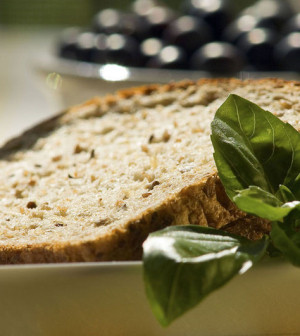- Strengthening Your Relationship: Practical Strategies
- Skip Storing This Everyday Product in the Fridge Door
- Green Tea + B3 Pairing May Boost Brain Health
- Navigating Your Midlife Crisis: Embracing New Possibilities
- City Raccoons Showing Signs of Domestication
- Mapping the Exposome: Science Broadens Focus to Environmental Disease Triggers
- One Week Less on Social Media Linked to Better Mental Health
- Your Brain Changes in Stages as You Age, Study Finds
- Some Suicide Victims Show No Typical Warning Signs, Study Finds
- ByHeart Formula Faces Lawsuits After Babies Sickened With Botulism
Health Highlights: Oct. 13, 2020

Here are some of the latest health and medical news developments, compiled by the editors of HealthDay:
Second Wave of Mental Health Fallout From Pandemic “Imminent,” Experts Say
A second wave of mental health and substance use disorders associated with the coronavirus pandemic is on the way, according to a paper published Monday in the Journal of the American Medical Association.
“A second wave of devastation is imminent, attributable to mental health consequences of COVID-19,” Dr. Naomi Simon, Dr. Glenn Saxe and Dr. Charles Marmar, from New York University’s Grossman School of Medicine, wrote, the Associated Press reported.
“The magnitude of this second wave is likely to overwhelm the already frayed mental health system, leading to access problems, particularly for the most vulnerable persons,” they warned.
They said the second mental health wave will lead to increases in suicides and drug overdose deaths, and will disproportionately affect the same groups as in the first wave: Blacks and Hispanics, older adults, the poor and health care workers, the AP reported.
—–
New Coronavirus Can Survive on Some Surfaces Up to 28 Days
The new coronavirus can survive on surfaces such as banknotes and phones up to 28 days in cool, dark conditions, researchers report.
They tested the longevity of the virus in the dark at different temperatures and found that its length of survival decreased as temperatures rose, CBS News reported.
For example, at 68 degrees Fahrenheit, the virus was “extremely robust” on smooth surfaces, surviving for 28 days on glass, steel and plastic banknotes.
But the survival rate fell to seven days at 86 degrees Fahrenheit and to just 24 hours at 104 degrees Fahrenheit, CBS News reported.
Virus survival was shorter on porous surfaces such as cotton, less than 16 hours at the highest temperatures and up to 14 days at the lowest temperatures, according to the study published in the Virology Journal.
But that’s much longer than previous research showing that the new coronavirus could survive up to four days on non-porous surfaces, the study authors noted.
—–
First Confirmed U.S. Case of COVID-19 Reinfection
A 25-year-old Nevada man is the first person in the United States confirmed to have developed COVID-19 twice.
His second infection was worse than the first, but he has recovered, USA Today reported.
The case involving the otherwise healthy man raises questions about how long people are protected after being infected with the coronavirus that causes COVID-19, and how much protection may be offered by a vaccine.
“It’s a yellow caution light,” Dr. William Schaffner, an infectious disease expert at the Vanderbilt University School of Medicine in Nashville, Tennessee, told USA Today. He was not involved in the research.
At least 22 cases of reinfection worldwide have been confirmed worldwide since the start of the coronavirus pandemic, but the actually number of reinfections is unknown.
Copyright © 2025 HealthDay. All rights reserved.










